| 1 | Eastern coral snake |
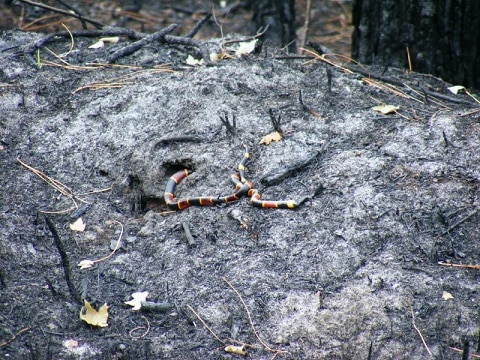
Coral snakes are extremely numerous in the Americas, with 82 confirmed species, yet they’re probably the most docile of the major venomous families. Vipers will assault people in explosive lunges, while cobras are constantly zooming around the countryside and getting into fights with people. Coral snakes are mainly humble forest floor dwellers, which can be watched from a safe distance with no harm.
The eastern coral snake of Florida is no exception. While this species will bite if you touch them, and of course pick them up, they’ll rarely charge you down from 5 metres away. Eastern coral snakes have a severely neurotoxic venom capable of causing respiratory paralysis, yet few feel these dark powers.
One rare death happened in 2006, when an eastern coral snake slithered into a tent and bit a guy who was drinking beer, and continued to drink for hours before checking into hospital. It helps that everyone in Florida has the famous nursery rhyme drilled into their head since they were babies in their mother’s arms: red touches yellow, kill a fellow. Eastern coral snakes measure 80cm, and have a high LD50 toxicity rating (0.2mg), but a low venom yield of 3-5mg per bite.
| 2 | Olive sea snake |
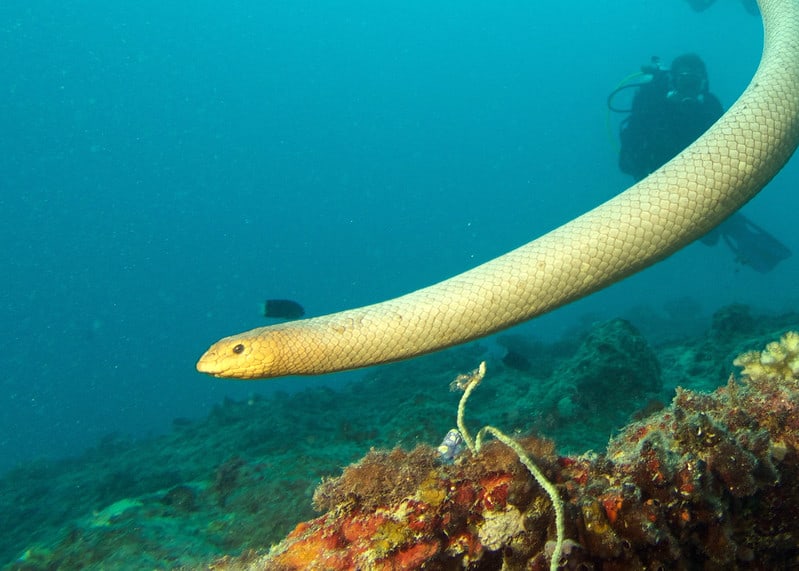
The wielder of a severely neurotoxic venom, yet this 120cm snake seems convinced that it’s a happy local sea character like a dolphin instead. Olive sea snakes have a friendly face, and virtually never bite humans – the main cases have been from fishing vessels accidentally scooping them up in nets.
This is a coral reef species, which spends its whole life in water, rarely coming to shore. Olive sea snakes are patient hunters which continuously investigate crevices along the reef wall, probing for fish. When they make a catch, they disable the struggling fish instantly using a few milligrams of paralysing venom. Yet olive sea snakes virtually never turn on humans, probably because all their assault instincts are geared towards fish.
Their natural predators include hawks and tiger sharks, and their main defence here is staying submerged. Olive sea snakes have even been known to swim over to scuba divers and coil harmlessly around their legs. It’s believed that these are mistaking legs for females. Olive sea snakes not only rarely attack humans, but barely have a concept of attacking humans.
| 3 | Neuwied’s false boa |
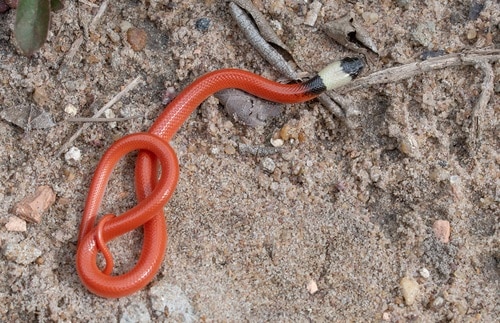
While the world is full of slightly venomous chewing snakes, Neuwied’s false boa is one of the most obscure species capable of causing serious damage. This snake is part of the 6 member Pseudoboa family. It’s found in Costa Rica and Panama, where it roams dark forests, villages and open grassland alike. As well as venom, Neuwied’s false boa has respectable constriction abilities, making it a multiskilled snake. A study found that its venom had strong proteolytic qualities, tearing through local skin cells. These almost matched the Neuwied’s pitviper of Brazil, a feared species of cerrado savannah.
Neuwied’s false boas are saved from demonic status by their mild personality. Not only will they not bite, but it won’t even occur to them to bite, as you tiptoe past them in a grassy field.
Reports of assaults are few and far between, adding virtually nothing to Panama’s national snakebite statistics (where fer-de-lances reign supreme). Touching a Neuwied’s false boa is the only real risk. If you walk past this species, it will probably just stare for a while, trying to work out if you’re an ameiva, its favourite prey, before realising that you’re actually a giant monkey.
| 4 | Aussie copperhead |
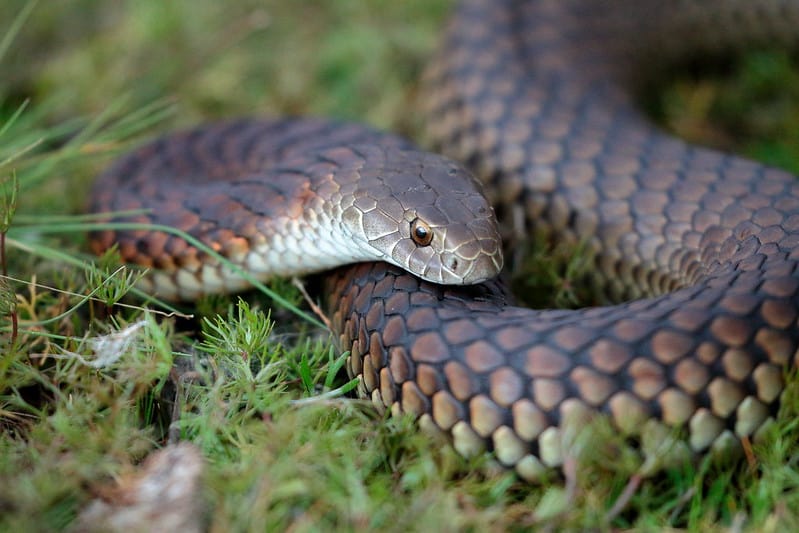
The lowland copperhead has bitten 12 confirmed victims, and killed 1. Yet this is much lower than eastern brown snakes, and very low considering that they inhabit well populated southern regions of Australia.
The lowland copperhead (Austrelaps superbus) is the most common of Australia’s copperheads and has no relation to the American version. They have an unusual tolerance for cool conditions, and a high tolerance for landscapes modified by mankind. They can appear in grassland, woodlands, and particularly water bodies on the edges of agricultural areas in Queensland, such as ditches. Aussie copperheads have a neurotoxic venom which disables muscle control, yet are reluctant to use this venom. If cornered, they’ll hiss loudly, flatten their body, and coil their lower body, but they only bite as a last resort.
If you see a copperhead in a ditch, and immediately walk past that ditch, you’ll almost certainly get away with it. Aussie copperheads can still kill, but are far less nervous and defensive than an eastern brown snake. Most of their diet is frogs, not humans.
| 5 | Baja California rattlesnake |
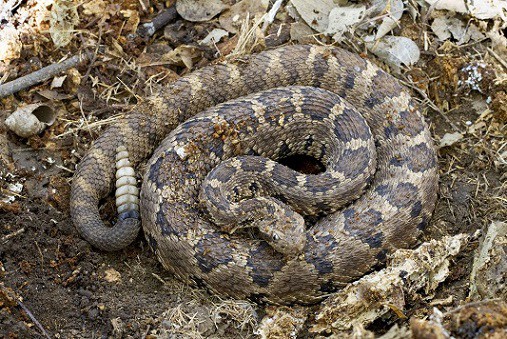
All rattlesnakes have a similar arsenal of strategies they can deploy, including a brutal lunge, staying completely still in camouflage, hissing, and shaking their rattle loudly. Yet in some, the probability is shifted far towards one strategy above the other. Baja California rattlesnakes are a relatively calm species, as a 2016 expedition discovered that they rarely lunge or shake their tail if they can help it. Instead, they rely on camouflage, with faded beige and brown patterns which blend perfectly with the dry shrubby slopes they inhabit.
Baja California rattlesnakes are found exclusively in their namesake peninsular, located directly south of US California. They reach a maximum of 89.8cm, and have a weaker venom than a speckled rattlesnake (Crotalus pyrrhus), but stronger than a red diamond rattler, according to a 2018 study.
Not only can you walk past a Baja California rattlesnake without harm, but they’re praying that you walk past. If the worst does happen, then bites are primarily cytotoxic, and haemotoxic, causing swelling, blistering and spontaneous bleeding. The Baja California rattlesnake would rather not fight at all. Don’t poke it, don’t pick them up, and don’t slap their face, and you’ll probably live.
| 6 | Banded water cobra |
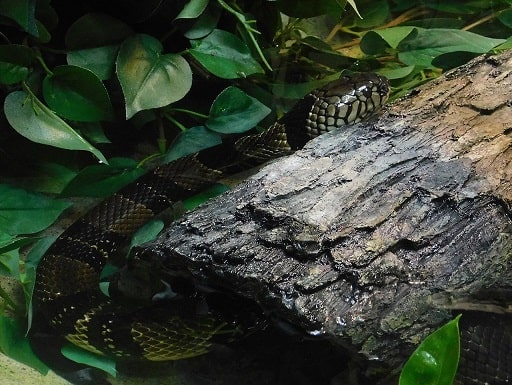
Though no cobra should be underestimated, the banded water cobra is one of the easiest to survive a face to face encounter with. This species lives by rivers in central African countries such as Burundi, DRC and Cameroon. They have several adaptions to a semi-aquatic lifestyle; enlarged lungs, nostrils higher on their head, and a narrower hood to reduce drag while swimming underwater.
Banded water cobras usually stay within a few metres of water, and this is what makes them comparatively safe. All cobras have two choices: 1) launch a frenzied attack, or 2) rapidly dart away. Because their river sanctuaries are always close by, banded water cobras are much more likely to resort to option 2. They tend to vanish into the safety of water when spooked, then dive below the surface or swim away.
You should still be cautious around banded water cobras, as they have one of the most neurotoxic venoms of the cobra family, blocking acetylcholine receptor in muscle cells and potentially causing paralysis. This species averages at 1.8 metres, and has a chest with black and cream stripes, sometimes with orange tinges.
| 7 | Pygmy rattlesnake |
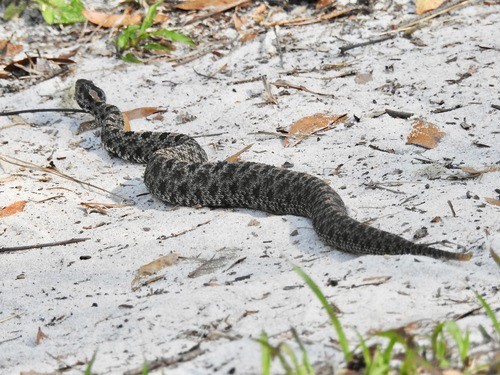
On US soil, meanwhile, one of the calmest rattlesnakes to meet is the pygmy rattlesnake (Sistrurus miliaris). This species lives in mild woodlands in Florida and Georgia, scenic forests with an abundance of fallen logs and knee length grass. They’re a common species, and encountered regularly by dog walkers and nature enthusiasts. Fortunately, they’re a lot less aggressive than the Mojave rattlesnake, which lives in arid land of Arizona.
Pygmy rattlesnakes are ambush predators, which hide near logs or long grass. Any unnecessary movement is contradictory to their hunting plans, and this extends to lunging at innocent people. Consequently, pygmy rattlesnakes won’t bite unless they really have to.
Receive a pygmy rattlesnake bite, and your arm will swell, painful blisters will form around the bite, and you may struggle to draw full, satisfying breath. Yet this scenario rarely happens, because of how reluctant they are to fight. A rare case happened in 2015, to a 17 month old boy, who survived after being given 22 vials of antivenom. Pygmy rattlesnakes average at 38-58cm, and are recognisable by dark spots and a grey background.
| 8 | Bungarus family |
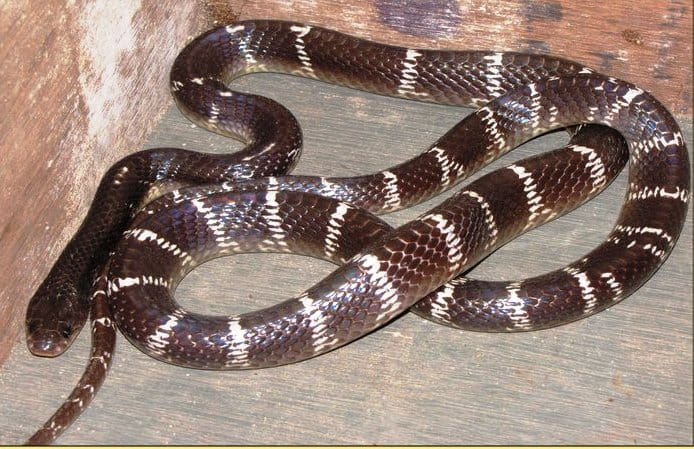
This is a weirder one, as it involves a snake family whose personality completely flips based on the hour of day. This is the Bungarus krait family of southeast Asia, which includes killers like the Indian krait and Malaysian blue krait.
All 16 Bungarus members are nocturnal, and your fate rests on precisely when you meet them. By day, they’re sluggish, docile and rarely bite unless manhandled. Under cloak of darkness, their evil side awakens; the Indian krait and cousins become alert, energetic, and ready to bite at a moment’s notice. Their venom is heavily neurotoxic, and patients commonly end up on a ventilator.
Bungarus kraits have a nasty tendency to invade village huts and bite people as they sleep on floors. Many wake up with no clue what happened. But by day, you can walk past these deadly serpents with little fear, as long as you keep a distance. Bungarus kraits and daylight don’t mix. It’s wise not to taunt them though, as they may remember this when night falls and rain sweeps in after a crack of lightning. In contrast, all cobras move by day (diurnal).
| 9 | Erythrolamprus bizona |
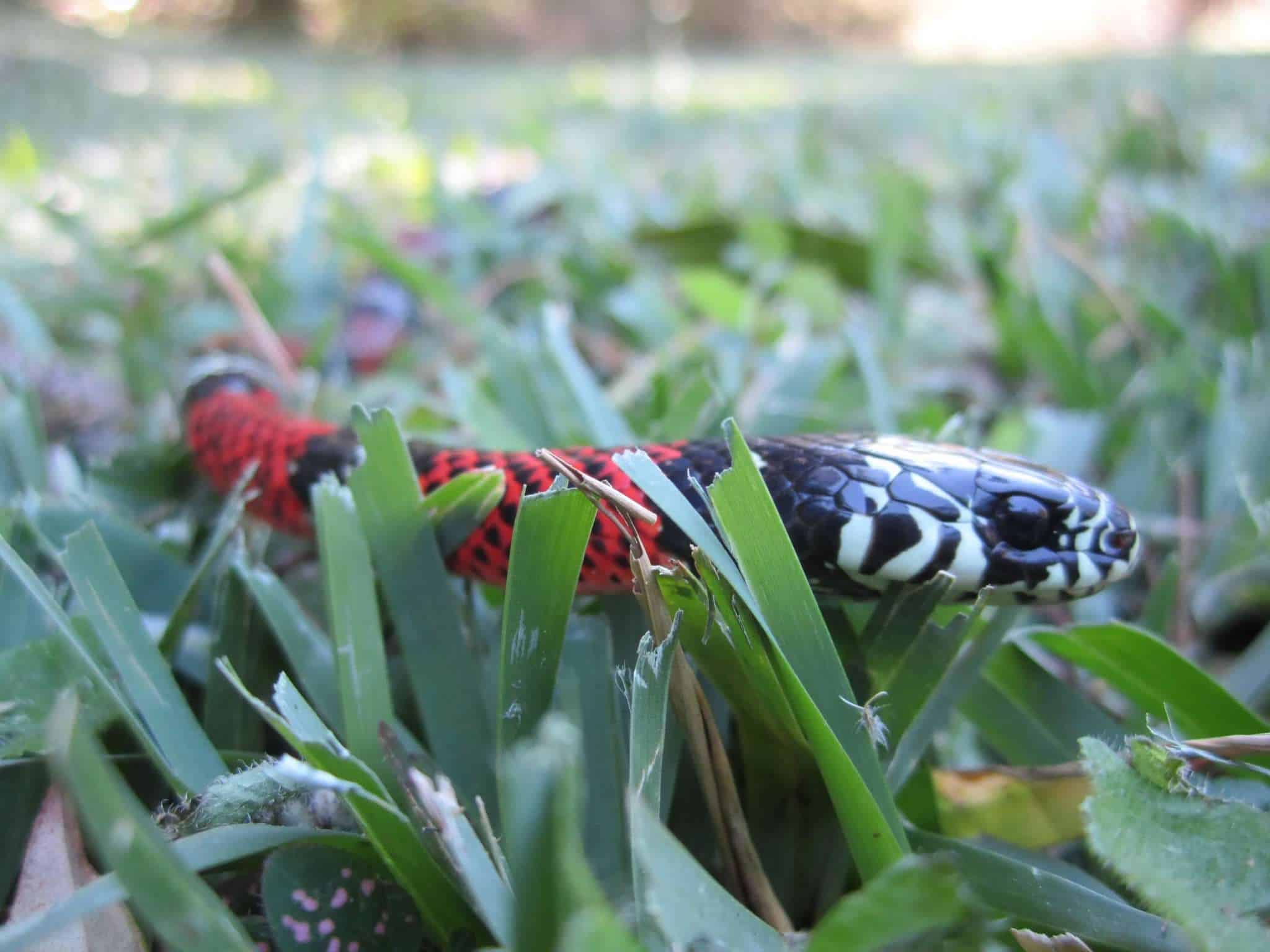
Another obscure venomous snake, which can deal out serious damage if underestimated. Erythrolamprus bizona, AKA the false coral snake, can be found across a swathe of Central America, including Costa Rica and Panama. Their venom defeats Neuwied’s pitviper for skin-shredding proteolytic toxins, yet few feel their wrath. E. bizona rarely bites, and it’s possible for farmers to walk past one each day on their way to the field without incident.
E. bizona has a great reason to be mild-mannered: it’s a superb mimic of local coral snakes. Their pattern consists of alternating red, black and white, all with the purpose of imitating their perilously neurotoxic neighbours, such as Allen’s coral snake and Central American coral snakes. Birds may think twice because of these colours, and because of this shield, E. bizona may has no need for extreme aggression. Their corrosive venom is the final touch to a well thought out defensive plan.
E. bizona maxes out at 120cm, and is particularly common in forests. Like a real coral snake, they can be observed safely from a distance for a few moments, before you keep on walking.
| 10 | Black-speckled palm pitviper |
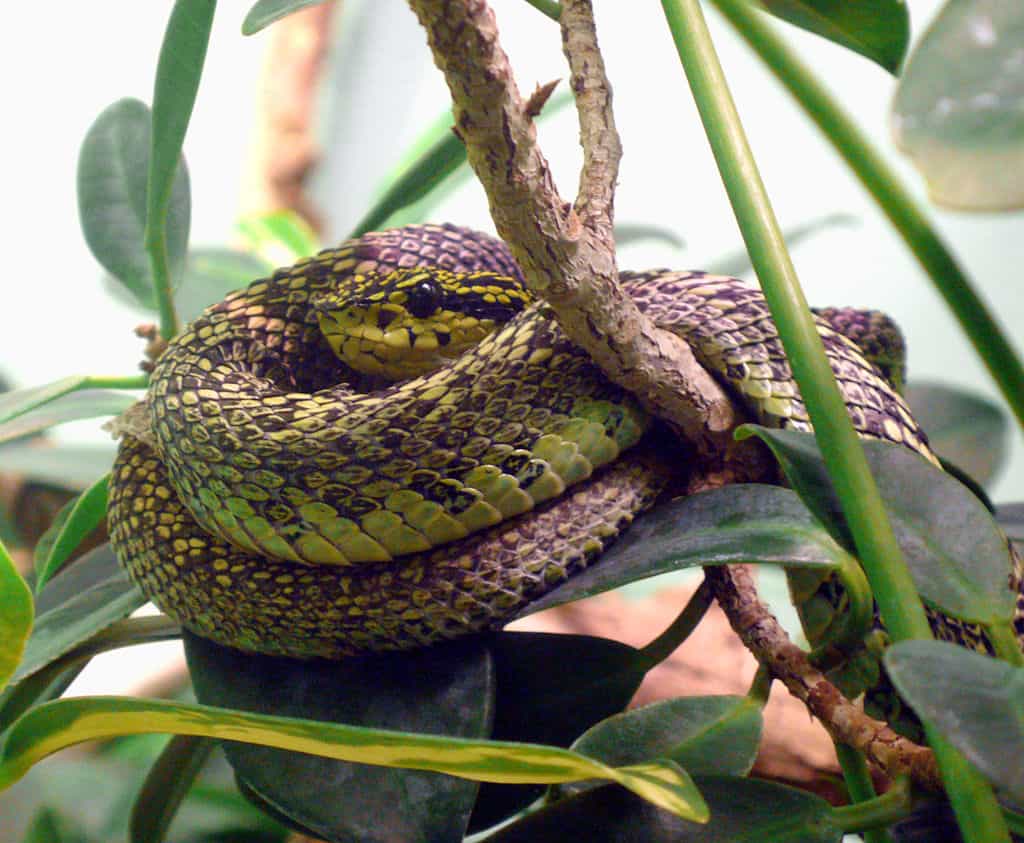
A venomous Costa Rican snake, with a rare toxin called nigroviriditoxin. Black-speckled palm pitvipers average at 60cm, with the all-time record being a 93cm female. They shun human civilisation, appearing only in pristine mountain ranges, at altitudes of up to 3000 metres.
If you’re unlucky enough to meet one, then a Bothriechis nigroviridis bite could kill, as they’re one of the most lethal Bothriechis members. But this species rarely lunges viciously for no reason, preferring to stay on their branch and not react, with a menacing glare. It’s perfectly possible to walk right past this venomous snake on a mountain trail of Costa Rica and come to no harm at all.
Black-speckled palm pitvipers simply have a high danger threshold. It takes a lot to bring them to the point where they decide they have to attack. They have a lot more wriggle room before they suddenly unleash all the aggression hidden inside them. Be cautious around Bothriechis nigroviridis (if you manage to find one), but as a branch-dwelling ambush predator, staying still is their default anyway.
